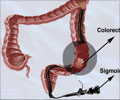Disposable version of the instrument used predominantly in colon related medical procedures in the United States will be widely available soon. It might shortly replace the conventional devices used in colonoscopy.

‘Nowadays, colonoscopies are conducted using reusable scopes, which are flexible, fiber-optic devices that are inserted into the anus and guided through the colon, But the disposable alternative is cheaper and has added the bonus of sanitation.’
Read More..




Today, colonoscopies are performed with reusable scopes, which are flexible, fiber-optic devices that are inserted into the anus and guided through the colon. The ranges allow endoscopists to examine patients for cancerous or precancerous conditions, as well as diagnose chronic disease. The nature of the devices and the microorganisms they encounter during use mandates rigorous cleaning.Read More..
In 2016, the Food and Drug Administration approved a disposable colonoscope designed to be used only once. With the new devices on the horizon, Hutfless and her colleagues aimed to determine which centers, if any, might benefit from using them.
Only a small fraction of the more than 15 million Americans who had colonoscopies last year contracted infections from the procedure. But, as Hutfless noted in a 2018 publication, the rates of infection at facilities that perform a relatively small number of the procedures are far higher than previously believed. In that paper, Hutfless reported that rates of post-colonoscopy infection at facilities known as ambulatory surgery centers (ASCs) are more akin to 1 in 1,000, rather than the 1 in 1 million figure previously accepted in the field.
Given that the one-time-use scopes have yet to be introduced, Hutfless focused on the cleaning, capital, and operating costs associated with the reusable versions currently available. Purchase, maintenance, and cleaning costs per procedure range from $189 at centers that perform at least 3,000 colonoscopies per year to $501 at centers performing 1,000 or fewer. When the cost of treating post-procedural infections is included, the numbers rise even higher, ranging from an additional $20 per procedure in high-volume, low-infection centers to almost $47 for centers with greater infection rates. The average cost of hospitalization to treat a post-colonoscopy infection is more than $12,000.
Colonoscopies are recommended for people aged 50 and above for routine cancer screenings. The procedures are performed under mild sedation in hospitals or ASCs. Hutfless' research has shown direct correlations between the number of procedures performed at a particular center and the rates of infection.
Advertisement
The researcher says that certain low-volume centers could benefit from disposable scopes. "They may decrease device-related infection transmission and may prove cost-effective for some facilities, particularly those with low volume and patients with high infection risk."
Advertisement
Source-Eurekalert













